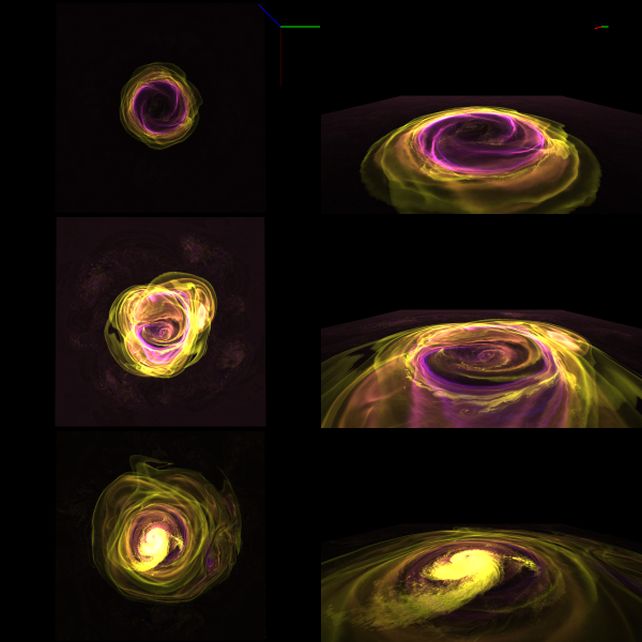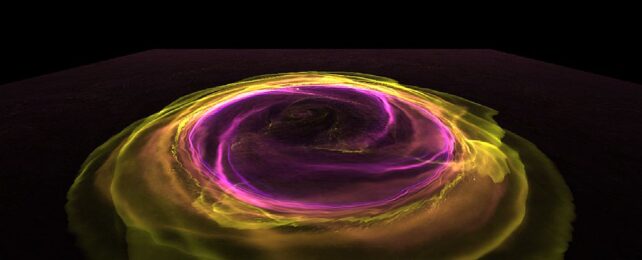Computer simulations are giving us new insight into the riotous behavior of cannibal neutron stars.
When a neutron star slurps up material from a close binary companion, the unstable thermonuclear burning of that accumulated material can produce a wild explosion that sends X-radiation bursting across the Universe.
How exactly these powerful eruptions evolve and spread across the surface of a neutron star is something of a mystery. But by trying to replicate the observed X-ray flares using simulations, scientists are learning more about their ins and outs – as well as the ultra-dense neutron stars that produce them.
"We can see these events happen in finer detail with a simulation," says computational astrophysicist Michael Zingale of the State University of New York at Stony Brook.
"One of the things we want to do is understand the properties of the neutron star because we want to understand how matter behaves at the extreme densities you would find in a neutron star."
Neutron stars are some of the densest objects in the Universe. They're what's left over after a massive star has lived its life, run out of fuel, and exploded in a supernova.
While the outer material blasts off into space, though, the core of the star collapses under gravity, forming a super dense ball around 20 kilometers (12 miles) across, packing as much mass into that tiny sphere as up to 2.3 Suns or so.
Matter that is squished so densely is expected to be a bit wacky, to put it mildly. But scientists can study their thermonuclear bursts to place constraints on their size, which in turn can help model their interiors.
We can't exactly go cozy up to a neutron star to look at them more closely, for a number of reasons (distance, danger, that sort of thing), but we can collect all the information we can about neutron star X-ray bursts, and try to put together a simulation whose results match the observational data.

That sounds simple, but the physics of neutron stars is really complicated; simulating their behavior requires a lot of computing power.
In previous work, the researchers used the Summit supercomputer at Oak Ridge National Laboratory to simulate the thermonuclear flames in two dimensions. Now they've built on that work, and scaled their simulations up to a third dimension.
"The big goal is always to connect the simulations of these events to what we've observed," Zingale explains. "We're aiming to understand what the underlying star looks like, and exploring what these models can do across dimensions is vital."
The model 3D neutron star had a temperature several million times hotter than the Sun, and a spin speed of 1,000 rotations per second, which is pretty close to the theoretical upper limit of neutron star spin speed. Then, they simulated the early evolution of the thermonuclear flame.
Although the flame in the 2D simulation spread slightly faster than the 3D version, the growth trends in both models were very similar. This agreement means that the 2D simulation remains a good tool for studying these hectic explosions, but there are still some things it can't do.
For example, turbulence behaves differently in two and three dimensions; but being able to use the 2D sim for the parts it can do will free up computing power for other things, like increasing the fidelity of the burning.
With this information to hand, the simulations can be put to work to provide real insights into how neutron stars throw their tremendous tantrums.
"We're close to modeling the flame spread across the whole star from pole to pole," Zingale says. "It's exciting."
The research has been published in The Astrophysical Journal.
